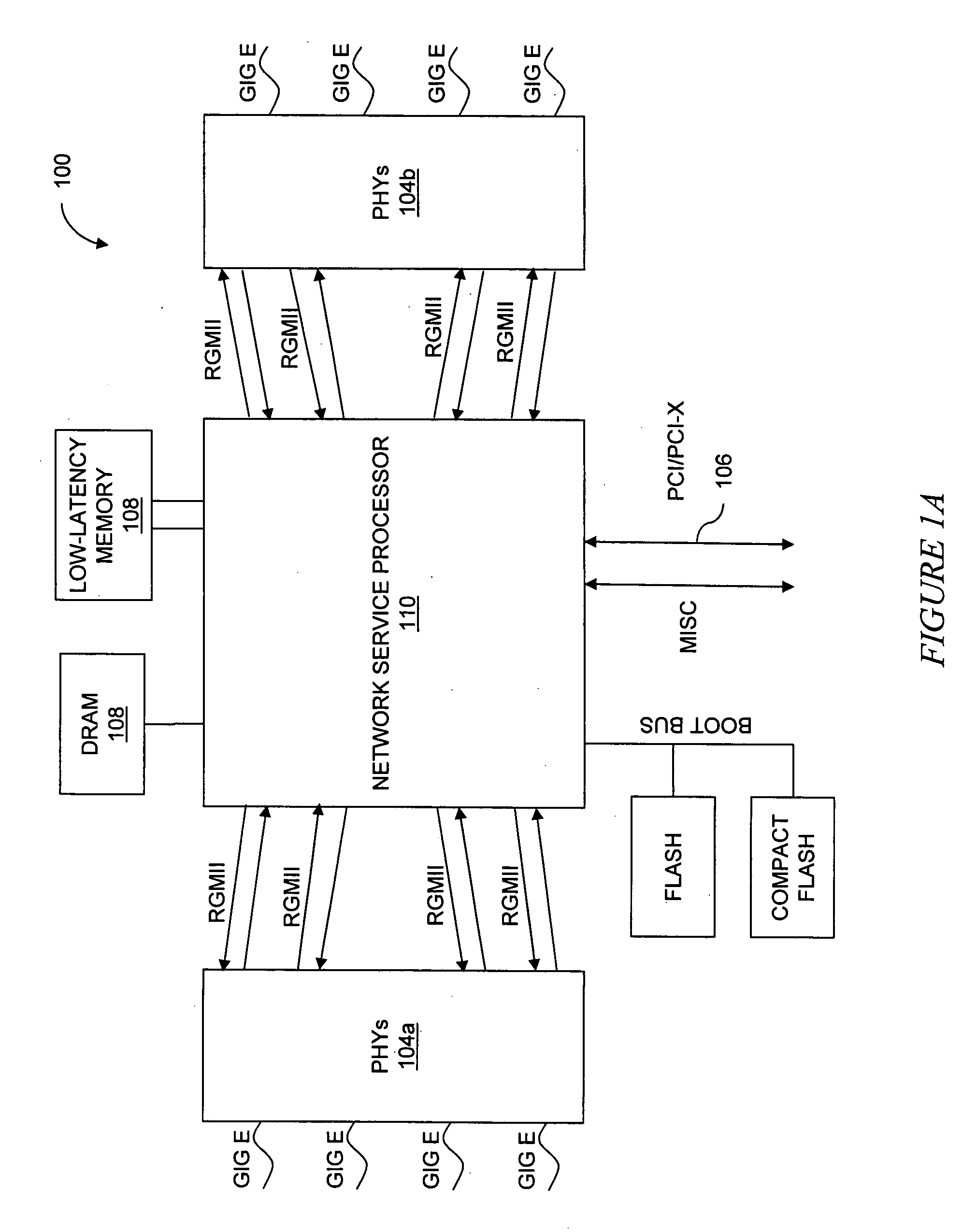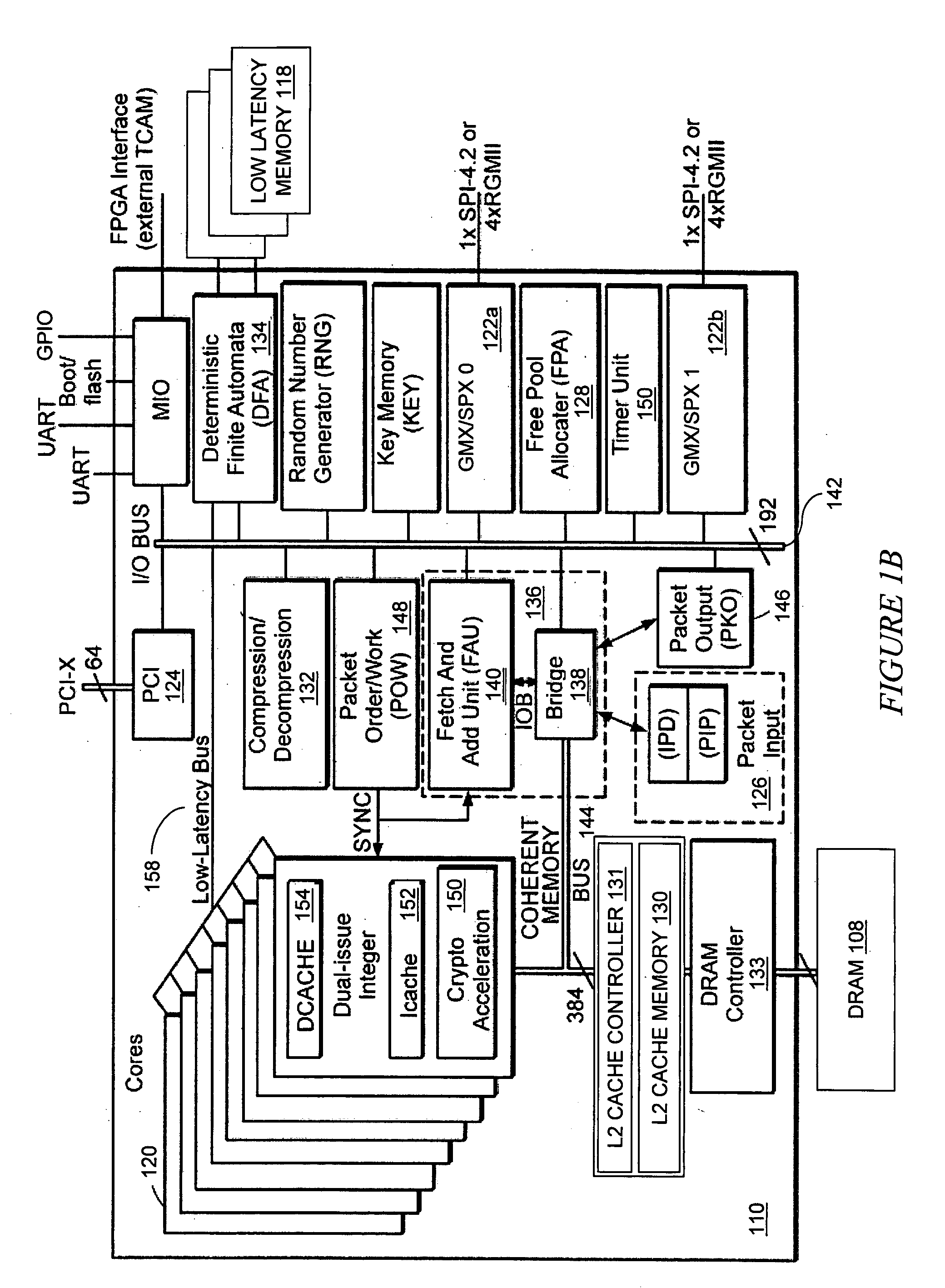Deterministic finite automata (DFA) processing
a finite automata and processing technology, applied in the field of deterministic finite automata (dfa) processing, can solve the problems of content processing applications that require a significant amount of post processing, the graph size and false matches in the data stream are exponentially increased, and the processing speed is increased
- Summary
- Abstract
- Description
- Claims
- Application Information
AI Technical Summary
Benefits of technology
Problems solved by technology
Method used
Image
Examples
Embodiment Construction
[0025] A description of preferred embodiments of the invention follows.
[0026]FIG. 1A is a block diagram of a security appliance 100 including a network services processor 110 according to the principals of the present invention. The security appliance 100 is a standalone system that can switch packets received at one Ethernet port (Gig E) to another Ethernet port (Gig E) and perform a plurality of security functions on received packets prior to forwarding the packets. For example, the security appliance 100 can be used to perform security processing on packets received on a Wide Area Network prior to forwarding the processed packets to a Local Area Network.
[0027] The network services processor 110 includes hardware packet processing, buffering, work scheduling, ordering, synchronization, and cache coherence support to accelerate all packet processing tasks. The network services processor 110 processes Open System Interconnection network L2-L7 layer protocols encapsulated in receiv...
PUM
 Login to View More
Login to View More Abstract
Description
Claims
Application Information
 Login to View More
Login to View More - R&D
- Intellectual Property
- Life Sciences
- Materials
- Tech Scout
- Unparalleled Data Quality
- Higher Quality Content
- 60% Fewer Hallucinations
Browse by: Latest US Patents, China's latest patents, Technical Efficacy Thesaurus, Application Domain, Technology Topic, Popular Technical Reports.
© 2025 PatSnap. All rights reserved.Legal|Privacy policy|Modern Slavery Act Transparency Statement|Sitemap|About US| Contact US: help@patsnap.com



